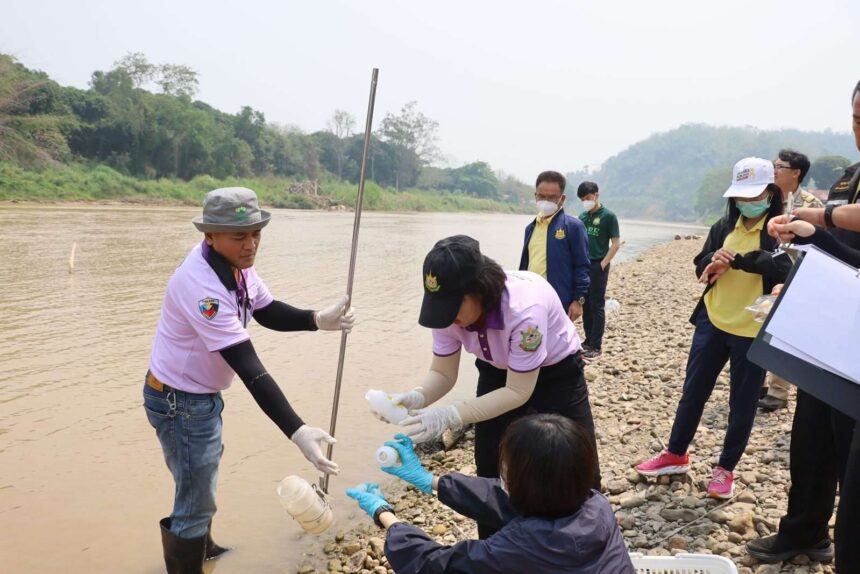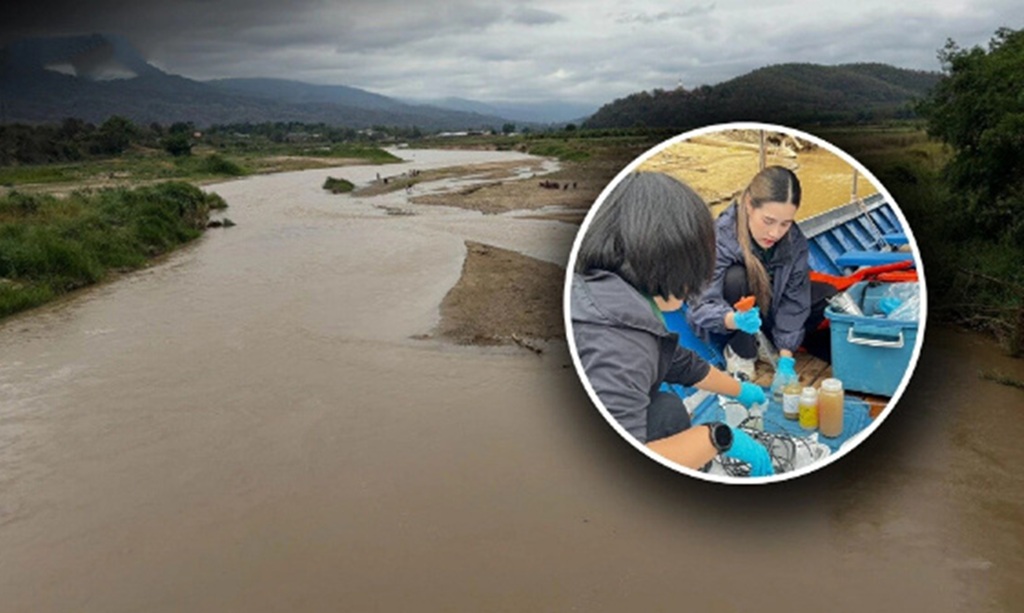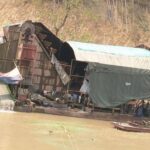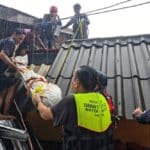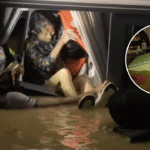CHIANG RAI – Since high levels of arsenic were found in the Kok River months ago, regular checks have taken place, but the problem remains. Efforts to contain the risks have continued, yet local talks have only led to requests for cooperation, not binding action.
On 3 May 2025, Charin Thongsuk, the Governor of Chiang Rai, directed all relevant agencies to inform residents to stop using water from both the Kok and Sai rivers. Many in the community are worried about their health and daily lives.
At the meeting point where the Ruak River joins the Mekong near the Golden Triangle in Chiang Saen, the water from the Ruak River is noticeably murkier and darker than elsewhere.
Recent field checks by the Northern Natural Disaster Research Institute found arsenic levels as high as 0.19 milligrams per litre in this area.
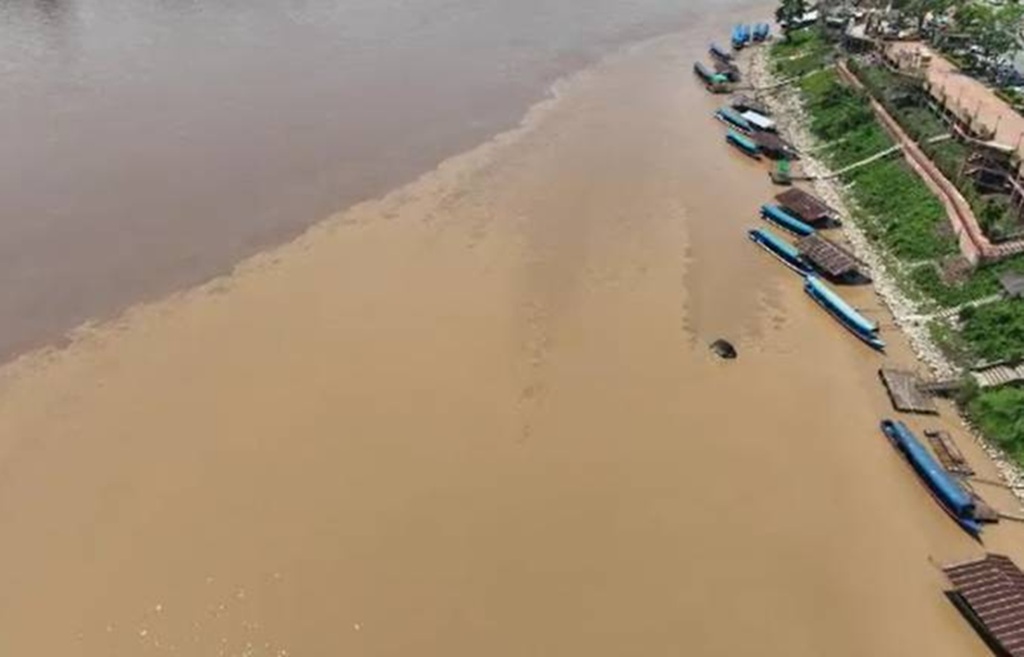
Although these tests were unofficial, the results show a clear risk. The mouth of the river, where sediment gathers, contains more toxic residue than other spots. This finding shows that arsenic does not always fade as water travels further from the source.
Local fishers in Chiang Saen are especially worried, since they have to work in the water. In the long run, they fear it will hurt their livelihoods because buyers may stop purchasing their catch.
Surapol Woraphatratorn, a researcher from Mae Fah Luang University, said along with testing for arsenic in water, it’s important to check crops that rely on water from the Sai River. These results will help prevent long-term health problems for people in the area.
Governor Charin Thongsuk confirmed the ban on using water from both the Kok and Sai rivers after arsenic levels were found above safe limits. Officials are working with the Pollution Control Department to test water quality in the Sai River.
Samples have already been collected, and plans are underway to set up a database for people living near and using water from the river.
Tests on tap water in Mae Sai district, which comes from the Sai River, found no arsenic contamination. The water meets safety standards and is safe for cooking and drinking.
Mr. Pirimu Na Khiri, a representative of the people in the Kok River basin, said people along the river are worried about what will happen in the long term if we eat fish and contaminants enter our bodies, or our children, who have played in the water.
Meanwhile, the Ministry of Foreign Affairs has discussed with the Myanmar ambassador to Thailand to inspect and coordinate with the mines that are suspected of being the source of the toxic substances, and to improve the system so that the substances are not released into nature, both domestically and by sending a letter to Myanmar.
The government plans to set up a heavy metal monitoring centre in Chiang Rai Province. All three universities in Chiang Rai Province have personnel and laboratories with the potential to test for heavy metals, covering the Ing River, Sai River, Kok River, Fang River, Kham River, Chan River, and Mekong River tributaries.




